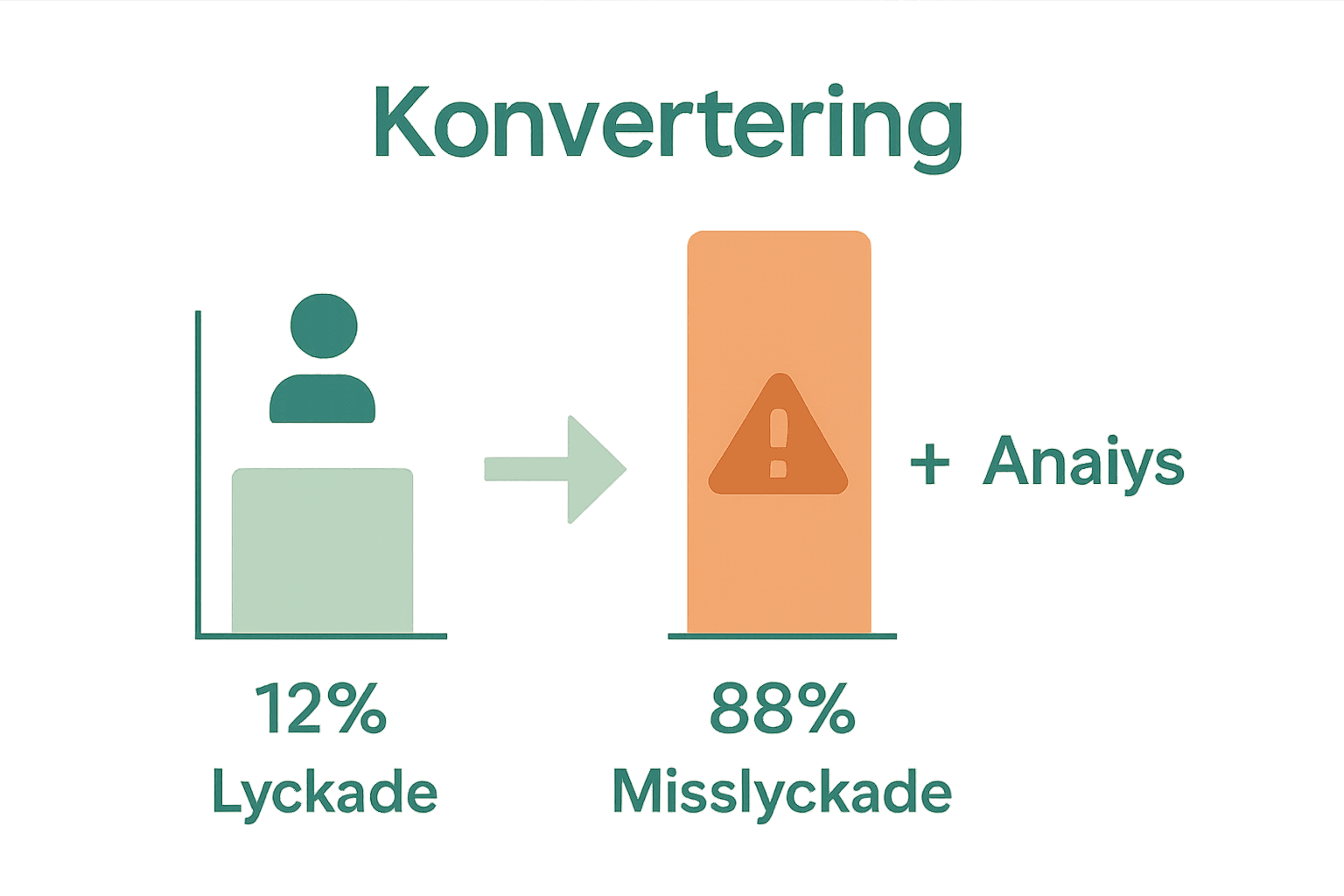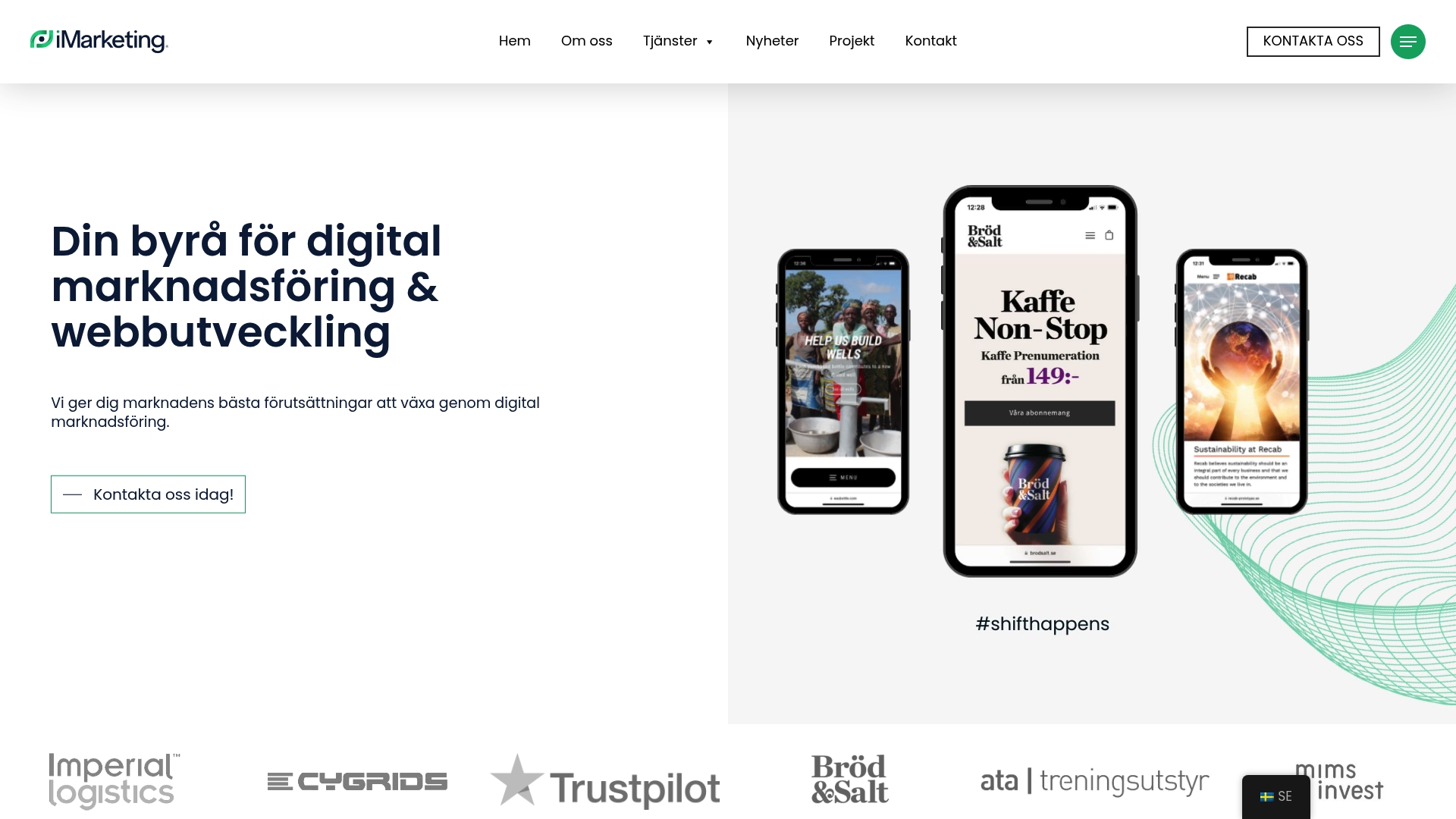Did you know that only about 12 percent of all optimization experiments actually succeed? Few businesses realize how much potential lies in making small adjustments to their website. With the right strategy, you can turn more visitors into loyal customers and increase your sales without even having to chase more traffic. Here, you'll gain insight into what it takes to create fluidity in the customer journey and discover why every small improvement can be crucial.
Key Points
| Point | Details |
|---|---|
| Conversion optimization | Aims to increase the percentage of website visitors who complete desired actions by improving the user experience. |
| Types of conversions | Includes various documents such as purchases, registrations and notifications, which are crucial to the success of the business. |
| Analysis tools | Quantitative and qualitative tools are necessary to understand user behavior and optimize website performance. |
| Strategies for success | A holistic strategy includes user research, optimized UX design, and continuous improvement of the user experience to maximize conversions. |
Table of contents
- What does conversion optimization mean?
- Different types of conversions on the web
- Conversion Optimization Key Processes and Tools
- Common pitfalls and mistakes to avoid
What does conversion optimization mean?
Conversion optimization is about turning website visitors into active customers through strategic improvement of the user experience. Conversion optimization is a methodical process where you systematically work to increase the proportion of visitors who complete a desired action – such as purchasing a product, filling out a form or booking an appointment.
According to conversion optimization research This is done through careful analysis and testing. The most important methods include:
- A/B testing of web pages
- Using heatmaps for behavioral analysis
- Detailed user tests
- Quantitative and qualitative data analysis
The goal is to eliminate all forms of friction in the customer journey. This means making each step as simple and inviting as possible, so that potential customers are naturally guided towards the desired conversion. Our optimization experts works specifically to identify and remove obstacles that can stop a visitor from making a purchase or registering.
Conversion optimization differs from traditional marketing by focusing on improving existing traffic, rather than just increasing it. It’s about intelligent design, psychology, and data-driven strategy – where every detail can be crucial to turning a passive visitor into an active customer.

Different types of conversions on the web
Conversions represents the critical moments when web visitors transition from passive observers to active participants. According to expert analysis These desired actions can include much more than just direct purchases.
Main types of web conversions include:
- Product purchase
- Requests for quotations
- Phone call to the company
- Registration for a service
- Registration for an event or webinar
- Newsletter subscription
Landing pages as conversion tools
According to Wikipedia There are two primary types of landing pages that play crucial roles in the conversion process:
- Referral-oriented landing pages: Focuses on information presentation and knowledge transfer
- Transactional landing pages: Designed for direct actions like purchases or registrations
Each conversion type requires a tailored strategy.
Our conversion improvement experts understands that successful conversion is about creating the right incentives and eliminating any barriers that might prevent a potential customer from taking the desired action.
Conversion Optimization Key Processes and Tools
Conversion optimization is a systematic method that requires careful processes and advanced tools. According to research data There are several crucial components that ensure successful optimization of website performance.
Key processes include:
- A/B testing: Comparison of two page versions
- Multivariate testing: Simultaneous testing of multiple elements
- User behavior analysis: Quantitative and qualitative evaluation
In-depth analysis tools
Here is a comparison between different types of analysis tools used in conversion optimization:
| Type of tool | Example | Main use |
|---|---|---|
| Quantitative | Google Analytics Conversion tracking Traffic analysis |
Measuring traffic Analyzing data Tracks conversions |
| Qualitative | Heatmaps User tests Session recordings |
Understands behavior Identifies problems Gain user insights |
For effective conversion optimization, the following tools are used:
-
Quantitative analysis tools
- Google Analytics
- Conversion tracking
- Traffic analysis
-
Qualitative analysis tools
- Heatmaps
- User tests
- Session recordings
Our digital sales experts emphasizes the importance of statistical significance. According to Wikipedia, there are two main strategies: test-based methods and preliminary market research that provides a deep understanding of the target audience.
Successful conversion optimization is about continuous improvement – every small step counts when the goal is to turn visitors into loyal customers.
Common pitfalls and mistakes to avoid
Conversion optimization can be a complex process with many potential pitfalls. According to research from Optimizely Only about 121% of conversion optimization experiments succeed, which underscores the importance of a strategic and thoughtful approach.
Common mistakes that can undermine your conversion efforts include:

- Lack of understanding of user behavior
- Random testing without a clear hypothesis
- Too short or insufficient test periods
- Ignore statistical significance
- Relying solely on quantitative data
Critical warning signs
According to Wikipedia, it is crucial to not only focus on A/B testing, but also to understand the user more deeply. The most important principles are that:
- Generate user insights before testing
- Create relevant hypotheses based on data
- See testing as a learning process, not just performance measurement
Our digital experts recommend always combining qualitative and quantitative methods. It’s not about winning every test, but about continuously learning and improving the user experience – small, consistently implemented improvements lead to greater success over time.
Strategies for successful conversion optimization
Conversion optimization requires a strategic and holistic approach that covers several critical aspects of the user experience. According to Optimizely, there is a structured strategy that successful companies follow.
Key components of an effective conversion optimization strategy:
- Thorough user research
- Optimized UX design
- Landing page optimization
- Persuasive copywriting
- Fast website loading times
- Confidence-inspiring elements
- Conversion funnel analysis
Implementation methods
According to Wikipedia Modern conversion optimization is about more than just single conversions. The strategy should focus on:
- Real-time analysis of user behavior
- Personalized communication
- Continuous improvement of the user experience
- Support throughout the customer lifecycle
Our Google Ads experts emphasizes that successful conversion optimization is an ongoing process of learning, testing, and adapting. The key is to view every interaction as an opportunity to improve and refine your digital strategy.
Time to take the next step towards more and better conversions?
Do you feel like you're testing everything but still getting stuck with low conversion rates? Many companies miss the small details that make all the difference – from clearer landing pages to smart A/B testing and better user understanding. In this guide, you'll gain insight into common pitfalls and the strategic process behind conversion optimization, but real success often requires tailored help.

In iMarketing.se is a team of experts ready to analyze your bottlenecks and translate the insights into increased sales. We offer everything from web development and optimization to business-driven marketing. Are you ready to improve your digital presence and see real results? Visit iMarketing.se and book a free consultation today. Don't miss the chance to take the step towards higher conversion rates now that you have the knowledge – contact us and let us show you how your website can also become a customer magnet.
Frequently asked questions
What does conversion optimization mean?
Conversion optimization is about increasing the percentage of visitors who complete desired actions such as purchasing products, filling out forms, or booking appointments, by improving the user experience on the website.
What methods are used for conversion optimization?
Common methods include A/B testing, the use of heatmaps, user testing, and both quantitative and qualitative data analysis to identify obstacles in the customer journey.
What is the difference between referral-oriented and transactional landing pages?
Referral-oriented landing pages aim to provide information and knowledge, while transactional landing pages are designed to drive direct actions such as purchases or signups.
How do you measure the success of conversion optimization?
Success can be measured by analyzing changes in conversion rates, user behavior, and by performing tests on different website elements to see which ones generate the best results.


